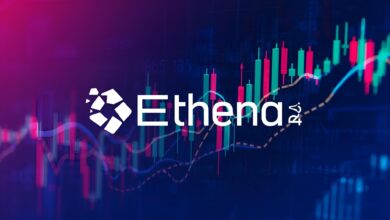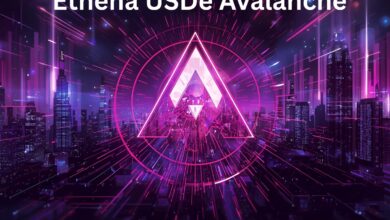Altcoin Season Nears as Bitcoin Dominance Slips
Analysts say Bitcoin dominance is fading—could a major altcoin season be next? Explore signals, narratives, strategies, and risks before the rotation.

Crypto cycles rarely move in a straight line. They unfold in waves: first, Bitcoin typically ignites the rally, then liquidity fans out across altcoins, from large-cap Layer-1s to emerging DeFi protocols and niche AI tokens. Today, many analysts argue we are approaching one of those inflection points again. As Bitcoin dominance—the share of crypto’s total market capitalization represented by BTC—begins to show signs of strain, traders are asking the same question: is altcoin season finally near?
This article examines why a weakening BTC.D (the commonly used ticker for Bitcoin dominance) can precede a broad-based altcoin surge, what on-chain and off-chain indicators seasoned analysts watch, and how to navigate the rotation without succumbing to hype. You’ll find a grounded look at liquidity, narratives, risk management, and the tactics that experienced market participants use to position for an altcoin cycle—while acknowledging the volatility, sector dispersion, and timing uncertainties that come with it. Throughout, we’ll use clear definitions and practical frameworks so that you can interpret the market on your own, rather than just following the crowd.
What “Altcoin Season” Really Means
From Bitcoin-Led to Broad-Based Risk Appetite
Altcoin season refers to a period when non-Bitcoin assets significantly outperform Bitcoin over several weeks or months. It is not measured by a single day’s spike or a handful of speculative winners. Instead, it tends to feature a sustained shift in risk appetite, as traders move from “blue-chip crypto” (Bitcoin, sometimes Ethereum) to mid-cap and small-cap tokens, seeking higher beta and faster percentage gains.
The Role of Bitcoin Dominance
Bitcoin dominance (BTC.D) is one of the most essential and widely monitored indicators of capital flow within the cryptocurrency market. When this metric trends downward after a sustained period of strength, it typically indicates that investors are reallocating capital from Bitcoin to higher-risk altcoins. However, this decline can represent two very different scenarios.

In a healthy rotation, Bitcoin remains relatively stable or trends gradually upward, while altcoins outperform, indicating a genuine risk-on environment fueled by strong liquidity and confidence. Conversely, a risk-off phase occurs when Bitcoin declines sharply and altcoins fall even harder, creating an illusion of weakening dominance that actually reflects panic and capital flight. To interpret BTC.D accurately, traders must consider broader price action, ETH/BTC trends, and sector breadth, ensuring context separates genuine rotation from market stress.
Why Bitcoin Dominance Weakens Late in a BTC-Led Cycle
The Psychology of Liquidity Migration
When Bitcoin rallies strongly, it soaks up attention and fresh capital. As spot buyers and derivatives traders crowd into BTC, volatility eventually compresses, upside slows, and market participants start searching for the “next thing.” The psychology is simple: if BTC is stabilizing, can I rotate into an asset that might move more?
This search is the seed of altcoin season. It is not purely technical; it’s a behavioral rotation spurred by opportunity cost and narrative momentum.
The Mechanics Funding, Collateral, and Risk Tiers
On centralized exchanges and DeFi venues alike, BTC and ETH frequently serve as collateral. As volatility compresses and funding rates normalize, traders are more comfortable taking long tail exposure. Liquidity—both in the order books and in on-chain pools—starts to spread out. If ETH/BTC breaks higher, it often accelerates the decline in dominance by signaling that even the second-largest asset is outperforming BTC, making traders more confident in rotating further down the risk curve.
Key Indicators Analysts Use to Spot Altcoin Season
BTC.D Trend and Market Breadth
The anchor is BTC.D itself. Analysts look for a multi-week breakdown from a rising or sideways dominance range, especially if BTC price remains above key moving averages. But breadth matters as much. A genuine altseason is characterized by multiple sectors moving in tandem, including Layer-1s, Layer-2s, DeFi, gaming, AI, and infrastructure plays. If only one niche rallies, it’s a sector rotation, not a full altseason.
ETH/BTC Relative Strength
A classic confirmation is ETH/BTC breaking above its base. Ethereum’s outperformance typically precedes or coincides with broad altcoin strength, as ETH serves as a bridge between BTC and the rest of the market. A strong ETH/BTC typically implies an improving risk appetite across the board.
Total Market Cap Ex-Bitcoin (TOTAL2) and Liquidity
The TOTAL2 chart (total crypto market cap excluding BTC) helps filter dominance noise. If TOTAL2 is trending up with rising spot volumes, improving order book depth, and healthier DeFi TVL (total value locked), it indicates genuine capital inflows. Analysts also watch stablecoin supply trends; expanding supply can be a tailwind for altcoin flows.
On-Chain Signals and Exchange Data
On-chain metrics, such as rising active addresses, developer commits, and protocol revenue, can enhance conviction in specific sectors. Exchange-wise, a rotation in open interest, funding, and perpetual futures volumes from BTC toward majors and mid-caps provides timely, though sometimes noisy, confirmation.
Narratives That Typically Lead an Altcoin Cycle
Layer-1 and Layer-2 Platforms
When capital rotates, Layer-1 and Layer-2 ecosystems often lead because they are foundational, possess large communities, and provide easier liquidity exits. Improvements in throughput, EVM compatibility, account abstraction, and modular design frequently serve as catalysts. Bridging, rollups, and data availability (DA) projects can ride the same wave.
DeFi and Real-World Assets (RWA)
DeFi tends to revive in altseasons as on-chain yields reprice and volumes rise. Protocols that demonstrate sustainable fee capture, transparent token economics, and robust security profiles draw initial interest. Meanwhile, RWA tokenization and stablecoin innovations can attract institutional interest, providing a more stable backdrop than purely speculative promises.
AI, Gaming, and Creator Economies
Trend-sensitive niches—such as I tokens, gaming/metaverse, socialfi, and creator tools—often surge ahead once liquidity loosens. They are highly narrative-driven, so they can run hard and correct just as sharply. Analysts differentiate between hype cycles and authentic user growth or revenue signals to avoid the worst of the churn.
How Professionals Structure Exposure for an Altcoin Season
Core-Satellite Construction
A common approach is a core-satellite portfolio. The core includes BTC, ETH, and a curated set of large-cap or high-conviction altcoins with demonstrable adoption. The satellites are more miniature, higher-beta positions sized modestly but with meaningful upside. This structure enables you to participate in the rotation while mitigating tail risk.
Staggered Entries and Liquidity Tranches
Because timing the altseason precisely is challenging, seasoned traders stage their entries. They allocate in tranches as confirmation grows (BTC.D trend break, ETH/BTC strength, TOTAL2 expansion), keeping dry powder for pullbacks. They also prefer assets with consistent liquidity—so they can resize quickly when volatility spikes.
Risk Budgeting and Max Drawdown Limits
Risk management is not optional in altseason. Professionals set max drawdown thresholds per position, define stop-loss levels or invalidations based on structure (not just price), and avoid correlated overexposure to a single narrative. They also hedge with BTC or ETH perps when beta gets excessive.
Timing the Rotation Without Chasing Tops
The Three-Phase Model
Market analysts often outline the altcoin cycle as a three-phase transition that reflects shifting liquidity and investor psychology. In the Bitcoin Leadership Phase, BTC dominates the market as it breaks out strongly, drawing capital away from altcoins and maintaining elevated Bitcoin dominance while most other assets stagnate.
The Hand-Off Phase occurs when Bitcoin’s momentum slows, ETH/BTC begins to strengthen, and leading Layer-1 networks or blue-chip altcoins start showing relative strength, signaling the first signs of capital rotation. Finally comes the Altseason Proper, where broad market breadth emerges, mid-cap and small-cap tokens surge, and narratives such as DeFi, gaming, or AI take center stage as dominance trends sharply decline. Identifying this hand-off early is crucial; it’s the sweet spot where risk-reward becomes most favorable—before the emotional, overextended frenzy sets in.
Avoiding Liquidity Traps
Altseason brings surges in new listings, micro-caps, and thinly traded tokens. Professionals concentrate on projects with clear liquidity venues, reasonable market depth, and transparent token unlock schedules. They minimize exposure to illiquid assets that can decline sharply in response to bad news.
Fundamental Filters to Separate Signal from Noise
Real Users, Real Revenue
In frothy periods, a simple filter is powerful: does the protocol show real users and real revenue? Whether in DeFi, infrastructure, or consumer apps, traction matters. If on-chain data reveals growth in volume, fees, and active addresses, the project is less likely to be a pure narrative play.
Token Economics and Supply Overhang

Clear tokenomics—encompassing emission schedules, vesting, buybacks, or fee sharing—can make or break performance during an altseason. Analysts map unlock calendars to avoid supply cliffs and prefer models where utility and value accrual align with protocol success.
Security, Audits, and Governance
Security is a moat. Projects with rigorous audits, proven bug bounty programs, and responsive governance are better positioned for the stress of rising TVL and user counts. This is especially critical in DeFi, where a single exploit can erase months of gains.
Technical Frameworks Traders Use in Altseason
Market Structure Higher Highs and Higher Lows
In trending markets, technicians favor assets printing higher highs and higher lows on daily and weekly timeframes, ideally supported by expanding volume. Breakouts that retest prior resistance as support are healthier than those that form vertical candles without consolidation.
Relative Strength and Pair Charts
Pair charts, such as ALT/BTC or ETH/BTC, help isolate alpha from the broader crypto beta. If a token is making higher highs against BTC, it’s genuinely outperforming, not just floating with the tide. Traders also compare sectors via index proxies to spot leadership rotation.
Momentum, Funding, and Open Interest
Momentum tools (e.g., RSI/MACD on higher timeframes) can validate breakouts, while stretched funding and euphoric open interest signals warn of crowded long positions. In altseason, risk often lies not in the first breakout but in late-stage momentum when funding spikes and perp skews go extreme.
Managing Emotions in a Fast Market
Greed, Fear, and the Discipline to Take Profits
Altcoin season tests discipline. Easy early gains encourage oversized bets and delayed profit-taking. Professionals predefine profit targets and scale out incrementally, accepting that they will never sell the exact top. They also remember that mean reversion arrives quickly in crypto; what surges 40% in a day can retrace just as fast.
Information Diet and Narrative Overload
During altseason, social feeds explode with hot tips, screenshots, and fear of missing out (FOMO). Curate your information diet: follow a handful of credible analysts, track on-chain data, and rely on your playbook. Noise is the enemy of execution.
Bear Case When A Weakening Dominance Doesn’t Deliver
False Starts and BTC Volatility
Not every dip in Bitcoin dominance heralds a sustained alt rally. If BTC breaks down sharply, altcoins typically underperform, and dominance signals lose reliability. Similarly, sudden macroeconomic shocks, such as interest rate changes, regulatory actions, or exchange rate fluctuations, can flip the script and push liquidity back to BTC or off the table entirely.
Sector Dispersion and Rotation Inside Altcoins
Sometimes the rotation stays narrow—one or two sectors run while others stagnate. Traders mistake this for altseason and overrotate into laggards, only to watch capital concentrate in the actual leaders. Breadth metrics and sector indexes help avoid this trap.
Practical Strategy A Playbook for the Next Altcoin Season
Before diving into altcoins, traders must confirm that market leadership is truly shifting away from Bitcoin. Look for multiple converging signals, such as an apparent breakdown in BTC dominance (BTC.D), strengthening ETH/BTC performance, a rising TOTAL2 market cap, growing spot trading volumes, and a noticeable rebound in DeFi total value locked (TVL).
One or two indicators can mislead, but when these data points align across timeframes, they confirm that liquidity is rotating and risk appetite is broadening. Patience during this “hand-off” phase helps distinguish between a temporary relief rally and the beginning of a genuine altcoin season, reducing the risk of entering too early.










